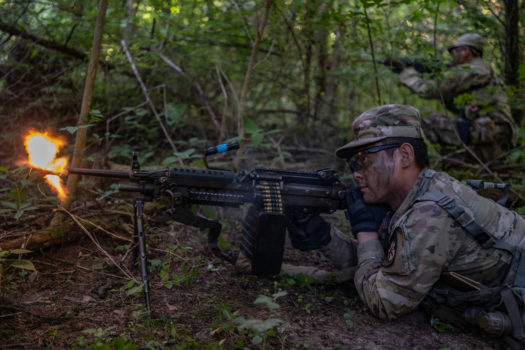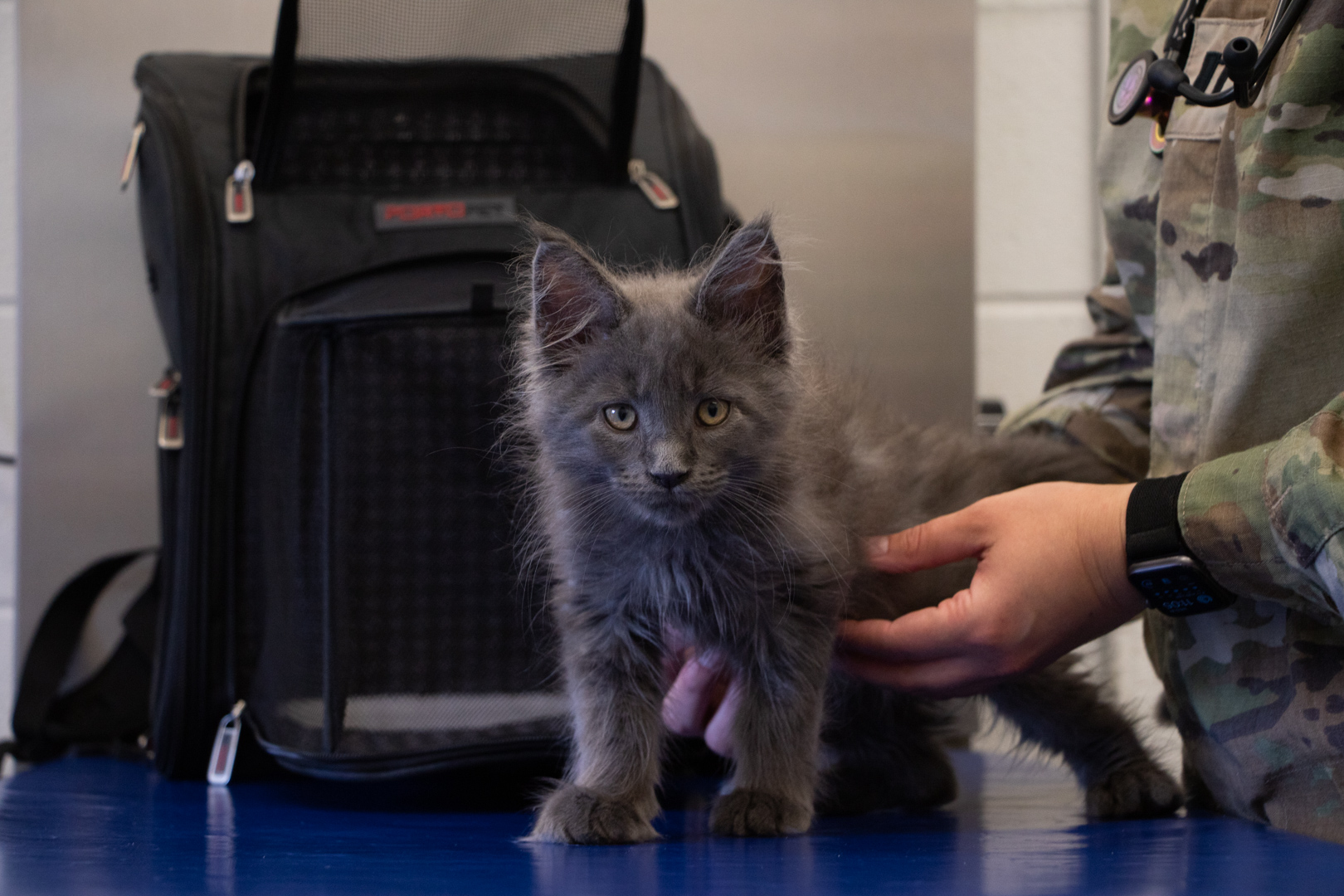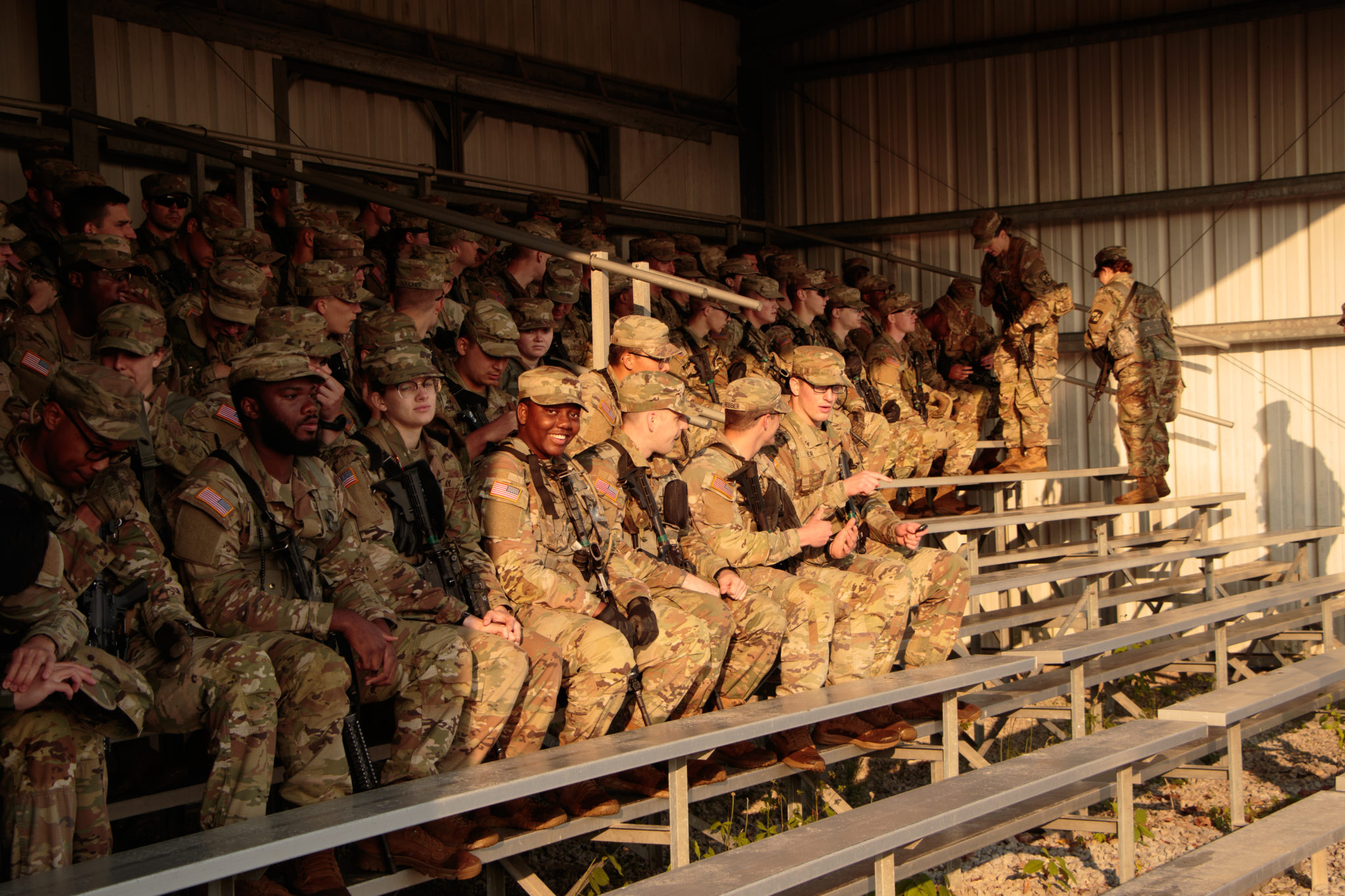At Cadet Summer Training, mission success isn’t realized without a competent team to make it happen. This is especially evident for FTX Panther, a Cadet lead mission that could easily fall to disaster without effective leadership and communication.
“My platoon’s mission was to deliver an ambush along with a hasty defense afterwards,” said Cadet John Barrales from California State University, Northridge. “We were given very little time to do the ambush. We didn’t even have time to brief an OPORD (operations order), so our communication had to be on point.”

To complicate matters, the platoon had to face the dense Kentucky woodlands, making swift movement next to impossible. This tough terrain made navigation a challenge.
“Once we got to our ORP (Objective Rally Point) we found that we were about 125 meters off,” said Barrales. “Once we got to our Release Point we dropped our rucks and did a hasty leader’s recon, letting my PSG (platoon sergeant) know what to do in case I wasn’t back in time. Once we went on the leader’s recon we realized how tough the terrain was. It was nothing but thorn bushes and very little trails to get to a good position for the deliberate ambush we had planned.”
Once Cadets from 1st Regiment had arrived at the mission objective, they waited for their targets to approach. The Cadets were concealed in thick vegetation only a dozen or so meters off of a gravel road, their weapons loaded with blanks, ready to lay down fire.
Soon after the opposing force arrived, the platoon in wait traded fire with their targets. By the end of the mock engagement, the opposing force had taken 3 simulated casualties while Barrales’s platoon was left unscathed.

“I think for all the time crunches that we had, I think we did a really good job,” said Cadet Conor Custer from Lockhaven University. “With the plan that we were going to go through with, it was bold, and I think that it ended up being really awesome in the end because we accomplished all of our objectives, we took no casualties, and we’re set up in our ORP already, getting ready to transfer over to the next mission.”
Without effective teamwork and communication, the ambush could have easily swayed in the opposing force’s favor. However, because of Barrales and his platoon’s communication and coordination skills, that was not the case.
“We live or die through communication, especially in an ambush situation,” said Custer. “If my support-by-fire doesn’t know to stop shooting when the assault element is going through, we could have killed our entire friendly assault position very easily.”
Barrales commented on how he felt about the mission.
“It’s a great feeling,” said Barrales. “It’s a great feeling because a lot of people don’t like it when you’re very crunched on time, but I think that really brings out the creativity and innovation as leaders. We were forced to communicate better because everybody had to know what was going on.”
A huge part of CST is learning how to work as a team to overcome otherwise impossible obstacles. For Barrales and his platoon, that lesson seemed to be sinking in. “At the end, we’re all here to help each other to succeed,” said Barrales.




